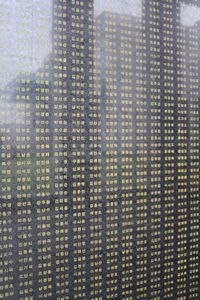Advertisement
Published: August 27th 2012

 Photo 2
Photo 2
A tablet listing some of the Korean soldiers killed in the Korean WarAs I left Korea, one lasting impression was of the confusing mixture of sentiments and thoughts that I encountered concerning the Korean War.
First, we would do well to remember that Korea was first split after World War II, before the Korean War. Korea had been controlled by the Japanese Empire in the decades preceding World War II, and much like Europe, was split amongst the Allied powers after the war. Control of the South was given to the American military, the North fell under Soviet military control.
Differences smoldered when free elections were not held as planned in 1948. Then, in 1950, the North invaded the South. The UN quickly became involved. Their action was in part made possible by the fact that the Soviet Union was boycotting the UN at the time over the issue of Taiwan’s presence in the UN. With the Soviet Union out of the Security Council at that time, a UN police action was easily approved. However the UN’s intervention then led to China’s entry in alliance with the North.
In 1952, as the seesaw of action settled around the 38th parallel, an armistice was signed.

 Photo 3
Photo 3
And the tablets stretch onwardBut it was only signed by China, North Korea and the UN. South Korea never signed it, a state of war still officially exists!
Korea is one of the longest lasting nations in Asia . . . . and in the world. Its history as a distinct nation and people goes back to the 3rd millennium BC. And despite the powerful differences between the North and the South today, there is a shared sense of brotherhood that crosses the border and bonds the Koreas together. At times thats been reflected in the political climate as well. At other times, such as now, it is not.
But despite the current chilly political climate between the two Koreas, I saw so many signs of the sense of unity and brotherhood that the Koreans share. I saw statues presenting the desire to unify, such as a split globe being pushed back together from opposing sides. Or the ‘Statue of Brothers’, where two brothers, one serving in the uniform of the South, the other the North, embrace across a split globe.
And then there was the ambitious plan from several years ago, before the current

 Photo 4
Photo 4
The flags of the UN participating nationschill, where train stations were constructed and train tracks were laid from South to North with the intention to then head westward into Asia and beyond. Today, the final station in the South doesn’t operate as it was intended, but the tourists from the South flock there to see the tracks heading northward, and get useless stamped tickets for a journey into the North that is not possible.
Meanwhile, each day, one train does pass through that station, heading into the North to deliver the raw goods to a factory that a businessman from the South built in the North when the hope of reunification was stronger. And each day that train returns to the South with new goods, produced with cheap Northern labor, ready for sale in the markets of the South.
Yes, it is a confusing relationship. Of chilly suspicion. And dreams of families and a culture reunited.
Advertisement
Tot: 0.113s; Tpl: 0.025s; cc: 17; qc: 37; dbt: 0.0265s; 1; m:domysql w:travelblog (10.17.0.13); sld: 1;
; mem: 1.1mb

 Photo 2
Photo 2
 Photo 3
Photo 3
 Photo 4
Photo 4






































